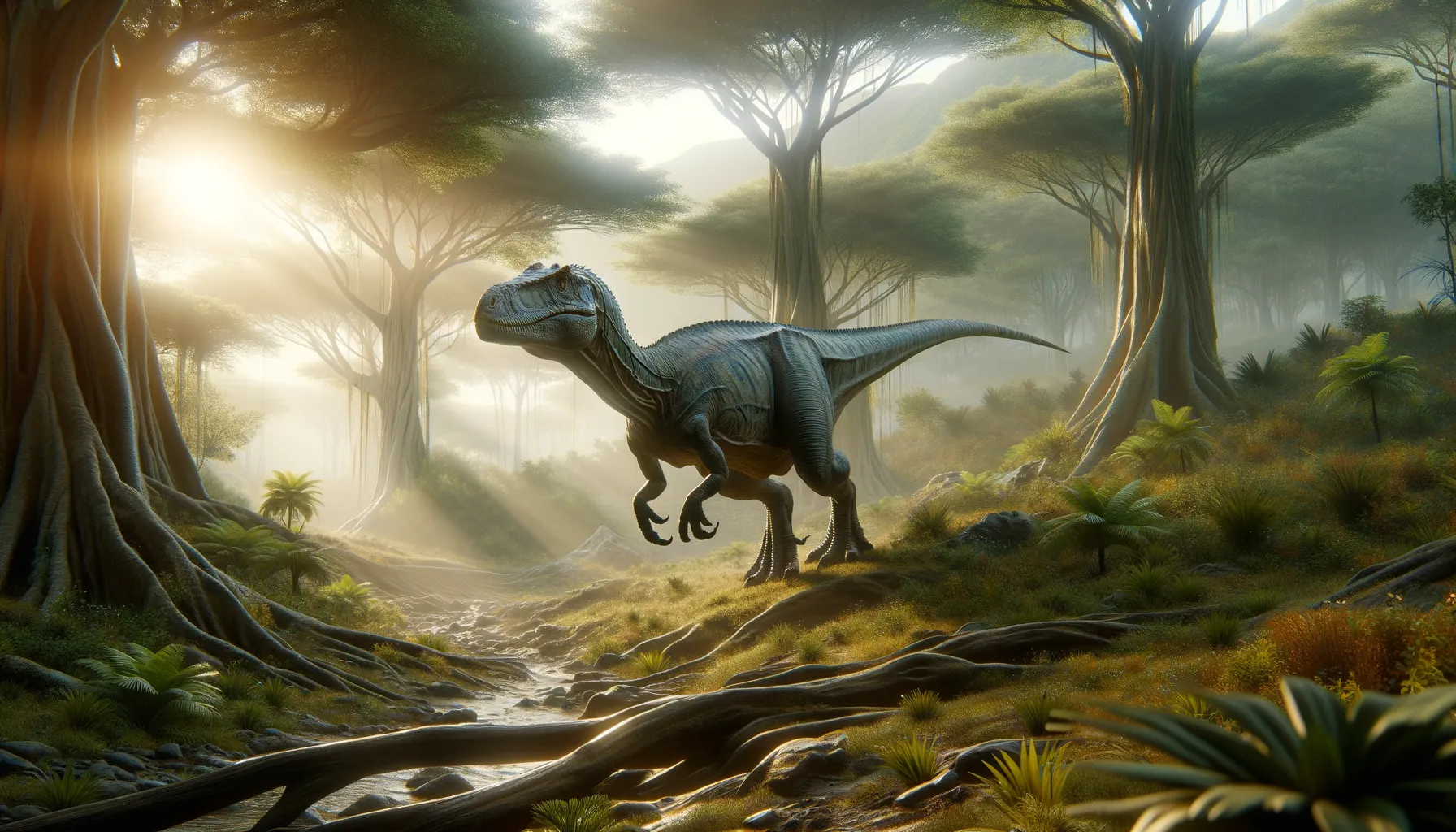
Poposaurus
Swift runner of the Triassic age.
Period
Triassic
Length
Typically about 3 to 4 meters in length.
Height
Approximately 1.2 meters tall at the hips.
Weight
Around 60 to 100 kilograms.
Poposaurus was a slender creature that roamed the Earth during the late Triassic period. Unlike many of its contemporaries, Poposaurus walked on two legs, an adaptation that possibly gave it an edge in speed. While it had a crocodilian appearance, it was more closely related to dinosaurs. This fascinating animal provides vital insight into the evolution of bipedalism in archosaurs.
Diet
Poposaurus was likely a carnivore, feeding on small animals. Its diet possibly included insects, small vertebrates, and perhaps carrion depending on availability.
Hunting
It might have used its speed to chase down prey or could have ambushed slower-moving animals. Its limbs suggest that it could maneuver quickly, which would have been useful in pursuing or avoiding other predators.
Environmental challenges
During the late Triassic period, Poposaurus faced fluctuating climates that could affect its food sources. The continual shifting of continents altered its habitat, leading to changes in the types of prey available. Competition with other predatory species also posed a significant challenge, as resources could be scarce.
Speed
Poposaurus was quite agile, capable of running swiftly on its hind legs.
Lifespan
The lifespan of Poposaurus is not well-known due to limited fossil evidence.
First discovery
First discovered in the early 20th century in the United States.
Fun Facts
- Poposaurus was not actually a dinosaur; it was a prehistoric reptile related more closely to crocodiles.
- It lived during the Triassic period, which was over 200 million years ago.
- Poposaurus was a bipedal creature, meaning it walked on two legs like a dinosaur.
- Unlike many of its crocodile relatives, Poposaurus was a land-dwelling creature.
- The name 'Poposaurus' means 'Popo's lizard,' named after the area in Wyoming where it was first discovered.
- Fossils of Poposaurus have been found mainly in North America.
- Poposaurus is an example of a fascinating group known as the poposaurids, which are more ancient than dinosaurs.
Growth and Development
The growth patterns of Poposaurus are not well-documented due to sparse fossil records. It likely experienced rapid growth periods during its juvenile stages to reach its adult size. As with many reptiles, its development would have been influenced by environmental factors such as climate and food availability.
Habitat
Poposaurus occupied varied environments, ranging from semi-arid regions to areas with more abundant water sources. Its fossils suggest it lived in a landscape that had both open spaces and vegetated areas. Such habitat diversity would have provided it with opportunities to hunt different prey and evade larger predators.
Interaction with other species
Poposaurus coexisted with various other species, including early dinosaurs and large amphibians. It likely competed with other carnivorous species for food resources. Social interactions remain speculative, but like many reptiles, Poposaurus may have been solitary or lived in loose groups depending on resource availability.
Natural lifespan
The natural lifespan of Poposaurus remains speculative without specific data.
Reproduction
Reproductive behaviors of Poposaurus are largely unknown, but it likely laid eggs. The nesting habits and care for young can only be speculated upon based on modern relatives and other archosaurs.
Social behaviour
Poposaurus might have been a solitary creature, similar to modern crocodiles. Little is known about whether it displayed any social behaviors. If it did live in groups, these were likely small and formed mainly for breeding purposes.
Fossil locations
Fossils of Poposaurus have been found in the United States, particularly in regions known for Triassic deposits. The primary discoveries have been made in areas like Arizona and Texas, providing crucial evidence for understanding its ecological role and physical attributes.
